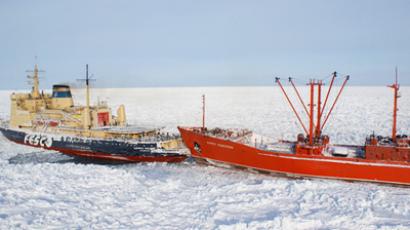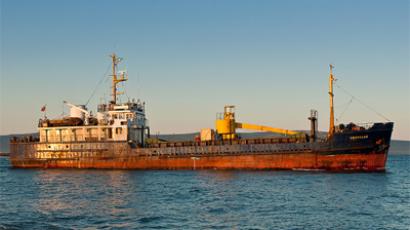Far East bonanza: Resource-rich Sea of Okhotsk all Russian, UN confirms

A UN maritime commission has confirmed that 52,000 square kilometers in the middle of the Sea of Okhotsk in the Far East is now Russian continental shelf, opening the way for massive oil and gas exploration.
The enclave in the middle of the Okhotsk Sea has been recognized as part of Russia’s continental shelf in accordance with the UN Maritime Convention of 1982. So far the zone lay outside Russian jurisdiction because a part of the sea was not covered by the 200 nautical mile zone internationally recognized as area of exclusive economic interest.
“This event has effectively taken place,” Russian Minister of Natural Resources and Environment Sergey Donskoy told journalists, stressing that the UN Commission on the Limits of the Continental Shelf had made a “unanimous decision" which is "unconditional and has no retroactive effect.”
The minister said that from now on Russian laws are applied to all natural resources under the Okhotsk seabed. The new enclave that has been integrated into Russia is comparable to a territory of a European state like Switzerland, Netherlands or Slovakia.
The original application for the Okhotsk shelf was filed to the UN in 2001.
In November 2013, when the UN agreed with arguments presented by Russia that 52,000 square kilometers of the Sea of Okhotsk, which borders Japan, is part of the country’s continental shelf, the Natural Resources and Environment Ministry described the enclave as a “real Ali Baba’s cave” since it has “plentiful precious minerals and natural resources.”

The 1.6 million square kilometers of the Okhotsk Sea have been poorly explored so far, so the area holds tremendous potential.
Up to 40 percent of the newly integrated maritime territory could hold natural resources, Russia 24 TV channel cited Geology and Geophysics expert Vladimir Glotov as saying.
Seabed oil deposits situated next to the Russian port of Magadan in the Sea of Okhotsk could reach up to 3 billion barrels of hydrocarbons. The first research work on the prospective Magadan-2 and Magadan-3 offshore blocks were held last summer. The research data is now being processed in E&P laboratories.
The Sea of Okhotsk has traditionally been known for its offshore fishing. The sea is rich in various kinds of fish, shellfish and crabs. before the UN ruling, Russian fishermen did not have the right to fish the whole sea.
In the 1990s, after the fall of the Soviet Union, poachers from various countries, particularly from Asia, used the loophole that the Sea of Okhotsk is not Russia’s internal sea to claim fishing rights in the area. Moscow had to distribute fishing quotas to prevent over-fishing of the sea.
From now on, Russian fisherman will be able to increase fishing volumes, because now they have the exclusive right to work in the middle of the sea, an area previously used predominantly by foreign fishing vessels.
Possession of the Sea of Okhotsk also puts the onus on Russian to protect the maritime environment and biodiversity of the sea, which includes orcas and whales, rare fish and shellfish species.
According to Donskoy, the UN decision is also “the first step in our Arctic applications, which will be ready in the near future.”
Russia’s Arctic claims include the huge seabed area of the Lomonosov Ridge and the Mendeleev Dome, which reach out into the floor of the Arctic Ocean as part of Russia’s continental shelf. Other countries that have claims on the Arctic seabed include Canada, Denmark, Finland, Iceland, Norway, Sweden and the United States.














